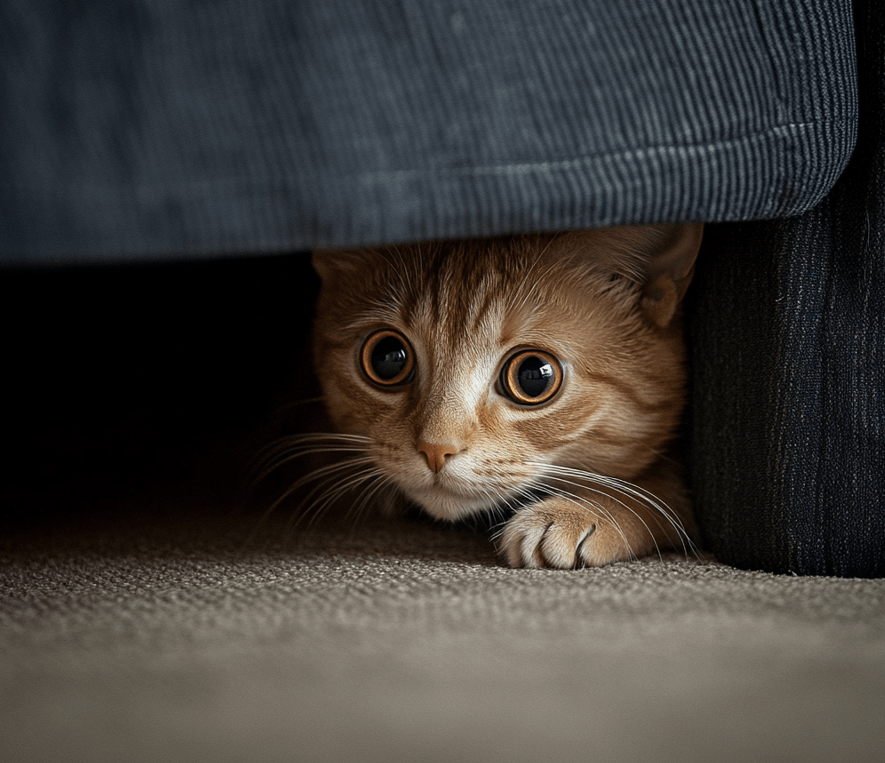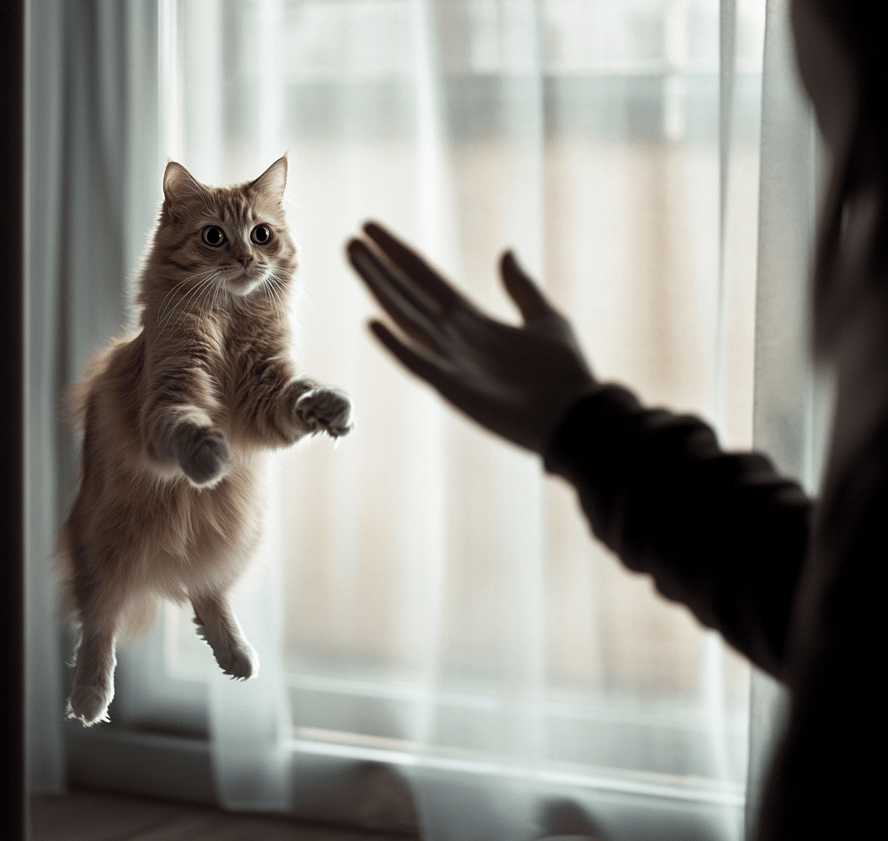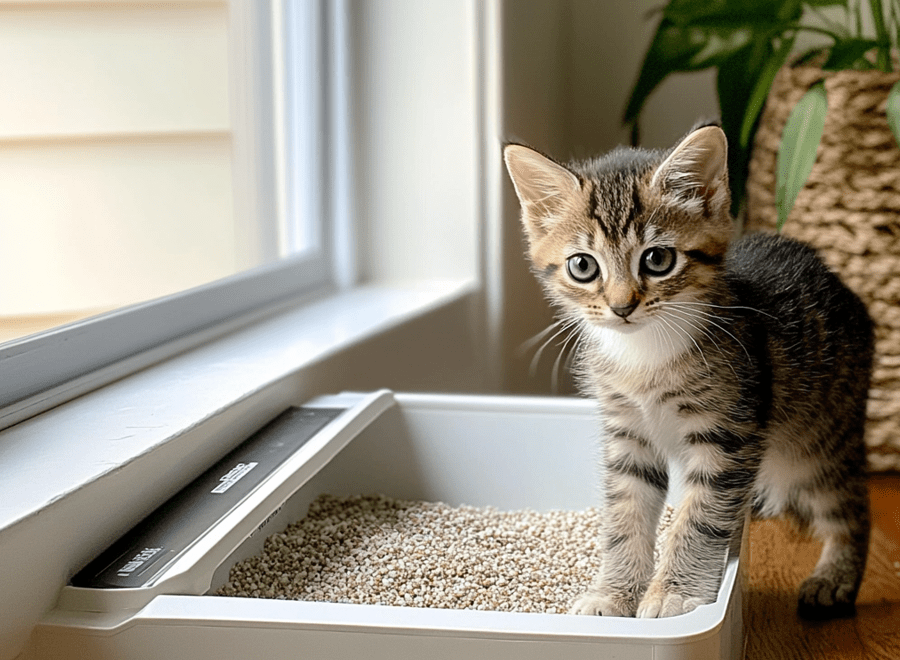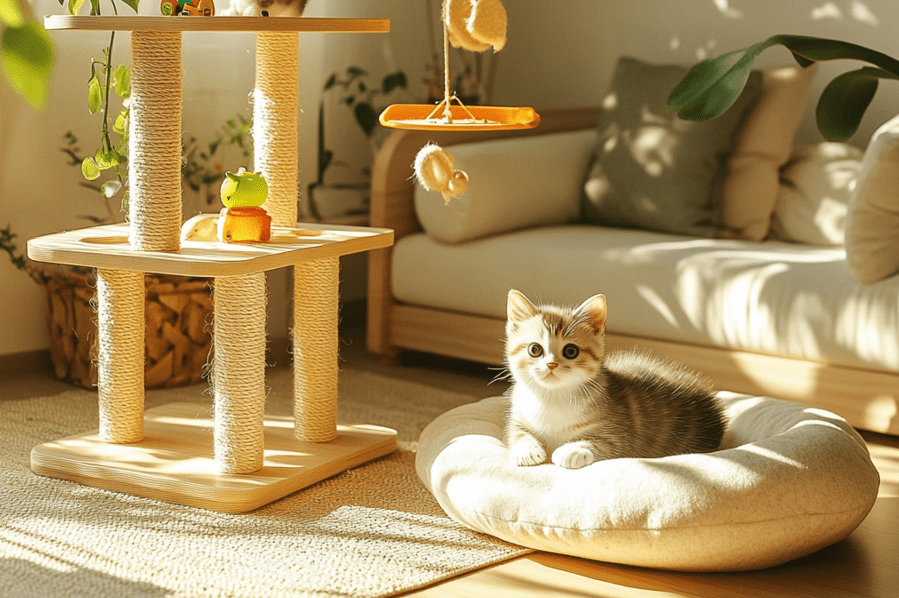
We all should know about the cat fare signs. Because it is very important for understanding a cat’s behavior. Cats, like other animals, when cats are threatened, often use one of three basic reactions: fight, flight, or freeze. And some cats, when terrified to the max, even empty their bladder or bowels at the same moment. Cats prefer to respond to stress in a certain way. You may notice your cat first attempts one response and if that fails tries something else. For instance, if your cat is scared of dogs and a friend comes over with his dog, your cat will puff out her fur to seem larger and then hiss or spit at the dog. If the dog does not back off, she may run into a safe hiding place and not move until she feels safe again.
To watch the summary of this article, just watch this video-
Here are some signs that she is frightened:

1.Hiding
2.Aggressive displays (spitting, hissing, growling, hair standing on end, swatting, biting, and scratching)
3.Loss of control of bladder or bowel function
4.Freezing or becoming stationary
While it’s natural to try to soothe your terrified cat, this may not always be in her best interest. Cats are known for being scared in new environments. Say, when you first get a new cat, she might hide away for a day or two. Likewise, things such as a visit to the vet or a new companion could shake her schedule and cause her to flee to a secure hiding location for a couple days.
Signs a Cat Is Scared: Recognizing Fearful Behavior
Understanding the signs a cat is scared is crucial for any pet owner. Fearful cats often display specific behaviors that are easy to identify once you know what to look for. These signs can range from subtle shifts in body language to more obvious reactions like hissing or running away. Common signs include hiding, aggression, and sudden elimination. Recognizing these behaviors early helps prevent further anxiety or aggression and allows you to address the root cause of your cat’s fear.
Why do so many cats become neurotic and fearful?
You must observe carefully to figure out the cause of your cat’s fearfulness. Even if you were aware that the individual or animal approaching you had good intentions, your cat may not have felt safe. There are many different things that can produce fearfulness, such as:
1.A specific individual
2.An unfamiliar person
3.Another pet or animal
4.A child
5.Loud or sudden noises
How to Know If a Cat Is Scared: Key Indicators to Watch For
Knowing how to recognize when a cat is scared can save you from accidental harm or exacerbating your cat’s stress. If your cat is showing signs like crouching low to the ground, dilated pupils, or rapid breathing, these are strong indicators of fear. Some cats may even try to escape or hide, sometimes becoming vocal when scared. Understanding these signals is important for determining the level of fear your cat is experiencing and how best to comfort them.
Below is what you can do so that your cat will have less anxiety and will feel more confident in her ability:

Schedule a Vet Check-up: First and foremost schedule an appointment and ensure everything is alright with your vet so that you don’t miss out on the health of your cat which might be causing the anxiety. Cats are good at hiding sickness, and so any change in behavior—aggression, hiding, inappropriate elimination could be a sign of a medical issue.
Give Space if She Is Hiding: If your feline is well but hiding, give her space to emerge when she can. If you are trying to push her away, it can make her more afraid. Make sure you provide her food, water, and litter box close by. Refresh these every day to keep an eye on her eating and drinking habits.
Reduce Sources of Stress: To make her comfortable, minimize her contact with what is irritating her.
Keep to a Routine: Cats are creatures of habit. Feed her and play with her at the same times every day, just as you give her the routine at the same schedule for cuddling or grooming; these things will make her feel safe and secure and probably, more confident, too.
Scared Cat Signs: Understanding and Addressing the Root Causes of Fear
Scared cat signs are often the result of various stressors such as loud noises, unfamiliar people, or a change in routine. These signs can manifest in several ways, including aggressive displays or excessive hiding. It’s important to evaluate the underlying cause, whether it’s a recent move, a new pet, or even a trip to the vet. Once you identify the cause, you can begin to alleviate your cat’s fear through positive reinforcement and gradual desensitization, helping them feel safe and secure in their environment.
How to slowly desensitize your cat to a particular stimulus:

Set an Appropriate Distance: First, understand what kind of distance your cat is calm if she is close to what makes her fear.
Gradual Introduction: While sitting at this distance, bring the fear stimulus close, and feed your cat delicious treats and some soft verbal praise.
Slowly Reduce Distance: Gradually, over time, bring the thing your cat is afraid of closer and closer, while praising your cat & giving him treats.
Be on the Lookout for Fear: If your cat demonstrates any sign of fear during any step, you have gone too fast. Here, to start over, back to a place where she felt safe. Work in short sessions and monitor her reactions to avoid this mistake.
Seek professional help if necessary: If you are not making progress, or you are not sure what to do, consult with a qualified animal behaviorist to lead the desensitization process.
A Note on Aggression

If your cat exhibits threatening behavior towards you or another person or animal, you might want to seek a professional animal behavior specialist. At least in the meantime, be sure to keep your feline friend in one part of your house where they will have minimal contact and under the strict supervision of someone. So if you get a feline bite or scratch, you are more likely to face the risks of serious infections. Contact your local animal control agency to report any bites so that they can put your cat in quarantine and check for any signs that they may have rabies. If you cannot eliminate the triggers of her aggression or if you cannot work with a behaviorist (due to costs, etc.), your only option may be to euthanize your cat in a humane manner. Your cat, as well as other animals and people who are around her (or your cat), should stay safe — so your top priority is to keep that a reality.
Actions to Avoid

Do Not Punish Your Cat for Being Afraid:
Do NOT punish your cat when she is showing fear. Punishment for the most part takes place when an animal commits its crime. This means your cat may associate any discipline with you, instead of the behavior which may have caused it to be scared in the first place. That can make her more afraid of you without even knowing why she is being punished.
Don’t Push Her to Face the Scary Element:
Do not force your feline to meet the object or situation that scares her. If she is nervous about a particular person, do NOT let that person try to pick her up or carry her. Those things are not going to reduce her fear of that person, and they likely will increase it.




